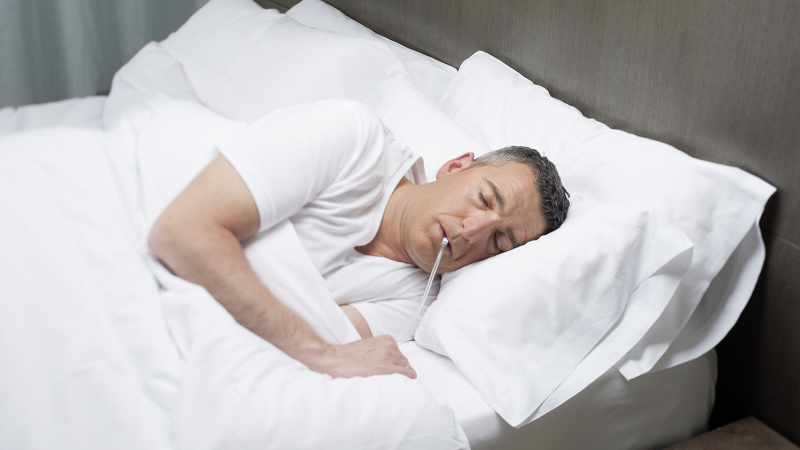
Obstructive sleep apnea (OSA) remains one of the most common sleep-related breathing disorders, affecting an estimated 900 million adults globally. Despite its prevalence, many individuals are unaware they have the condition, which can lead to severe health issues such as high blood pressure, cardiovascular disease, and type 2 diabetes. A significant challenge is that approximately 80% of moderate-to-severe cases go undiagnosed and untreated.
For those diagnosed, the market for sleep apnea treatments is evolving rapidly. The global sleep apnea device market, valued at $8.52 billion in 2024, is projected to grow to nearly $13 billion by 2030. New technologies are emerging as medical tech companies innovate in response to patient needs and preferences.
Emerging Alternatives to CPAP
The traditional treatment for OSA, the continuous positive airway pressure (CPAP) machine, has long been regarded as the gold standard. Despite its effectiveness, many patients experience discomfort with the masks and equipment, leading to high dropout rates. As a result, alternative solutions are gaining traction in the market.
Among these alternatives are mandibular advancement devices, which reposition the jaw to keep airways open, and neurostimulation implants that stimulate the hypoglossal nerve to prevent airway blockage. Another promising innovation is the negative pressure device, which operates by pulling rather than pushing air, effectively keeping the tongue and soft tissues positioned correctly.
The Taiwanese company Somnics Health is making strides with its iNAP device. This compact, battery-powered apparatus connects to a flexible mouthpiece, creating negative pressure that keeps airways open. Users can breathe naturally through their noses, enhancing comfort and usability. “The beauty of it is it allows natural breathing … and it’s a very comfortable, quiet and efficient solution,” explained Olivier Lauzeral, general manager of Somnics, during a video interview.
Developed by Chung Chu Chen over a decade ago, the iNAP was initially tested and approved in Taiwan and has gradually entered markets across Asia and Europe. It received clearance from the US Food and Drug Administration in 2020 for adults with OSA who cannot tolerate CPAP. Currently, approximately 3,000 patients in the US and around 10,000 worldwide are utilizing the iNAP device.
Targeting the Untreated and the Unsatisfied
While studies indicate that negative pressure devices may not match the efficacy of CPAP—showing improvements in 75% to 83% of patients compared to nearly 95% with CPAP—Lauzeral highlights that the iNAP is designed for patients disenchanted with existing treatments. “Seventy percent of our patients are ‘CPAP failing,’” he said, noting that the remaining 30% are new to treatment options.
Lauzeral aims to attract younger demographics, as half of the OSA population is under 53 years old. Many of these individuals are reluctant to use CPAP, which can lead to untreated symptoms worsening over time. “What’s sad to see is those people being in denial, not wanting to be treated when they’re in their 30s or early 40s,” Lauzeral noted, emphasizing the importance of proactive treatment.
Somnics has introduced a subscription model in the US, allowing patients to pay for the iNAP device, priced at $1,399, in installments over 24 months. However, the device is not currently covered by health insurance, and Lauzeral expressed hopes for future changes in this regard.
Experts in the field acknowledge the potential of the iNAP as an alternative treatment. Dr. Hrayr Attarian, a sleep medicine specialist at the Northwestern University Feinberg School of Medicine, indicated that larger studies are necessary to establish the device’s efficacy. He characterized it as “an alternative but not a replacement for CPAP,” while recognizing its less intrusive nature.
Dr. Johan Verbraecken, a pulmonologist and medical coordinator at the Antwerp University Hospital, also supports further research to validate the effectiveness of the iNAP. He views it as an add-on treatment rather than a first-line option, particularly for severe cases of OSA. Verbraecken pointed out that for the iNAP to compete with CPAP, it must more effectively lower patients’ Apnea-Hypopnea Index (AHI), which measures the frequency of breathing interruptions during sleep.
As the market for sleep apnea treatments continues to expand, Somnics is poised to cater to patients seeking alternatives to CPAP. “We’re ready to start working with partners that will help us really get to the next level and grow and capture all those patients,” Lauzeral concluded.







